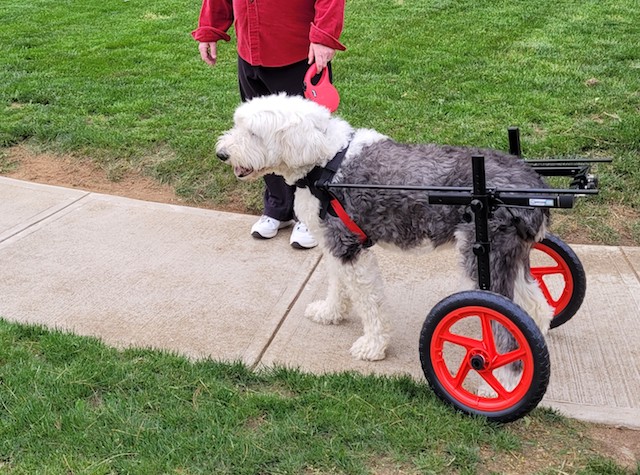Expensive and problematic custom dog wheelchairs are a thing of the past. A fully adjustable dog wheelchair like one from Best Friend Mobility is available for dogs of all sizes at reasonable prices.
Many brands are available, but you must choose the right one for your precious pooch. You want one that is easy to use, lightweight, portable, and appropriate for all surfaces. All surfaces must also be corrosion-free and washable, so maintaining them is not an issue. If you choose the right one, you will provide your disabled dog with a new lease on life for years!
Getting Your Pet To Use a Dog Wheelchair
Choosing the right one is just the first part of the process. One of the main challenges for pet owners when buying a wheelchair is getting their dog to use it. Some take to it like ducks to water, but others, not so much.
After getting a BFM wheelchair for your dog and assembling it, your next task is to get your dog on it. Don’t worry if they seem suspicious; most animals shy away from unfamiliar things. You have to be patient and use a little bribery to convince them to stand still long enough so you can strap the wheelchair on them.
You might fail to get them to start moving after putting them in the wheelchair. They might turn donkey and dig in their heels. That’s perfectly okay. Some dogs take a couple of weeks to get used to the contraption, especially if they have some ability to move without it. However, after a few tries, they will finally get the idea and get moving.
Helpful Tips
- If your dog is still mobile for short stretches, take them for a walk without putting them in a wheelchair. When they start slowing down, put them in the wheelchair and start back home. Your pet will associate the chair with something positive, like going home, making them more willing to work with you.
- Suppose your dog has limb weakness but still tries to use their legs. That means they can still feel the surface and want to maintain contact with the ground with their paws. If that’s the case, put them in the wheelchair, but refrain from putting the weakened legs on the straps that lift their feet off the ground. The dog wheelchair will still support most of their weight, but the dog will not feel hobbled. Letting them use the weak legs for as long as they can may also help improve muscle tone.
- Pay attention to how your dog’s back looks when in the wheelchair. If you notice the back is roached (curves up), the chest strap prevents the dog from stretching their back to its entire length. Adjust the length of the side arms to accommodate the torso and stretch the back comfortably. On the other hand, if the back curves inward, it might indicate the need for a belly strap to give the dog more support to its core.
